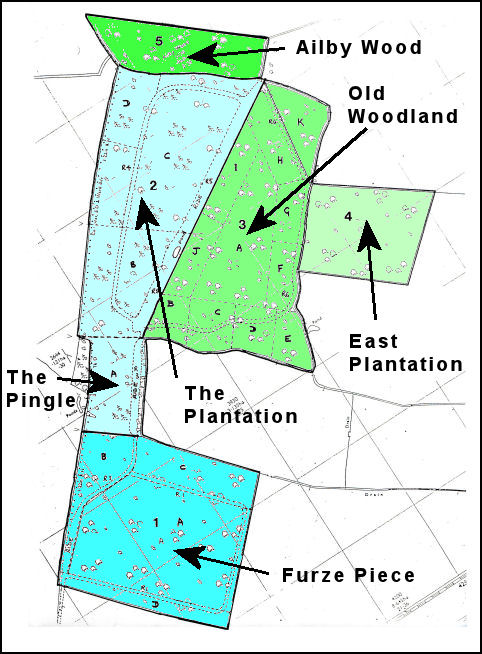
Description
This website was established in 2020 for those interested in how Rigsby wood is managed and would like to explore new ways in which ‘place’ can be celebrated as a common asset. It was envisaged that the website would present accessible text and images and a range of interactive functions. The objective is to engage virtual and real-space visitors at all levels with ecological and social history and projections into the future of 'humankind in nature'. In particular, the virtual woodland was envisaged as a portal were humankind can view and record their own stories about their interactions with treekind. Such projects have now come of age with the advent of the iphone. They are based on using social media such as wikis, photoalbums, video libraries and discussion threads based on interactive web-based GIS with locally triggered downloads. They are readily accessible and extendable for individuals, families, community groups and schools near and far. These interactions require a simple, flexible, readily updatable management plan format capable of developing as computer technology changes.

The management compartments
Rigsby Wood,
which is owned and managed by the Lincolnshire Wildlife Trust
, lies partly on chalky Boulder Clay,
partly on glacial sands on the southern edge of the Lincolnshire Wolds AONB.
For management
purposes the wood is divided into five compartments, which reflect its past
history of management and origins. The land slopes from 45m AOD on the southern
edge of the wood to about 22m at the northern edge of Ailsby Wood (Compartment
5). The slope is steepest in Furze Piece and the Pingle (Compartments 1 and 2a)
and becomes shallower towards the northern part of the reserve. Old ridge and
furrow can be detected in the Pingle.
Although some
areas have been replanted, the reserve retains a rich ground flora. A
substantial part is old coppice of hazel and ash with standards of oak and ash.
There is a fine show of bluebells in spring. On the left of the main ride there
is a plantation woodland with old coppice on the right. Here wood anemone,
wood-sorrel, early purple orchid, greater butterfly orchid, sweet woodruff, and
ragged robin can be found. Along the old boundary between Rigsby and Haugh
parishes there is a fine mediaeval bank and another between Rigsby and Ailby
Woods with large field maples.
The reserve
supports a good range of breeding birds, including tawny owl, great spotted
woodpecker, treecreeper, finches, five species of summer warbler and five of
tits. Barn owls hunt along the rides. In winter, woodcock, goldcrest and redpoll
are frequent visitors.
The wood is surrounded by arable land that was once pasture/hay meadows and rough grassland.
Woodland in general was accorded high priority in the Trust's Reserve Establishment Policy document published in September 1979.. Woodlands on primary sites and those within series or blocks of woods are of particular importance. Rigsby is one of a chain of woods along the southern part of the eastern boundary of the Wolds AONB. The wood is an important landscape feature.